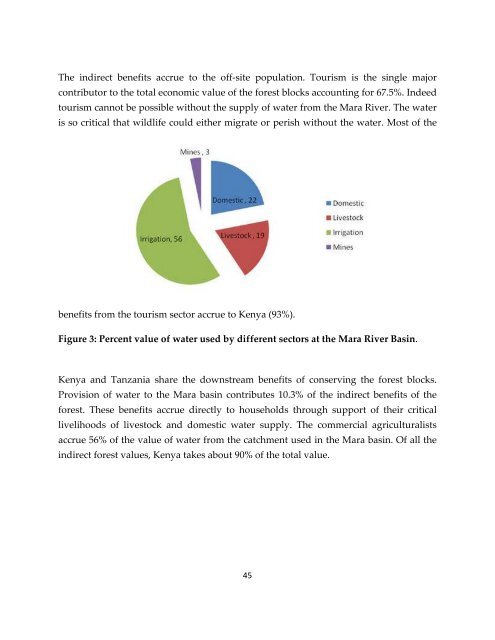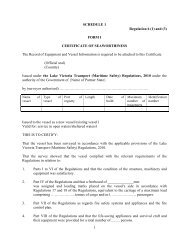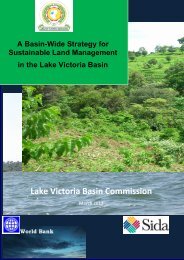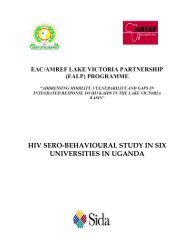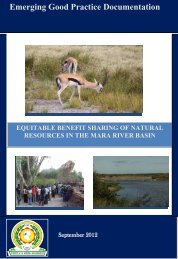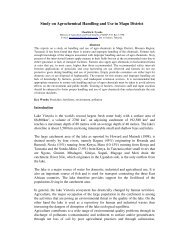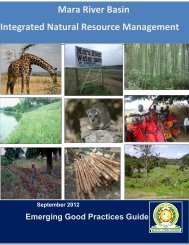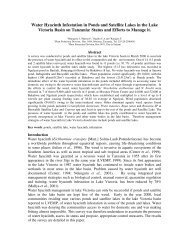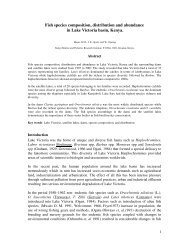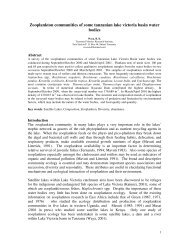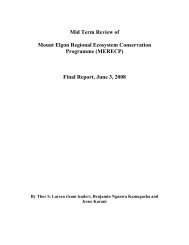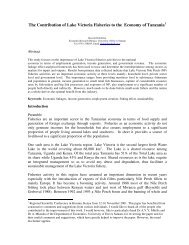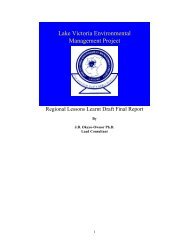Total Economic Value of Maasai Mau, Trans Mara and Eastern Mau ...
Total Economic Value of Maasai Mau, Trans Mara and Eastern Mau ...
Total Economic Value of Maasai Mau, Trans Mara and Eastern Mau ...
Create successful ePaper yourself
Turn your PDF publications into a flip-book with our unique Google optimized e-Paper software.
The indirect benefits accrue to the <strong>of</strong>f-site population. Tourism is the single majorcontributor to the total economic value <strong>of</strong> the forest blocks accounting for 67.5%. Indeedtourism cannot be possible without the supply <strong>of</strong> water from the <strong>Mara</strong> River. The wateris so critical that wildlife could either migrate or perish without the water. Most <strong>of</strong> thebenefits from the tourism sector accrue to Kenya (93%).Figure 3: Percent value <strong>of</strong> water used by different sectors at the <strong>Mara</strong> River Basin.Kenya <strong>and</strong> Tanzania share the downstream benefits <strong>of</strong> conserving the forest blocks.Provision <strong>of</strong> water to the <strong>Mara</strong> basin contributes 10.3% <strong>of</strong> the indirect benefits <strong>of</strong> theforest. These benefits accrue directly to households through support <strong>of</strong> their criticallivelihoods <strong>of</strong> livestock <strong>and</strong> domestic water supply. The commercial agriculturalistsaccrue 56% <strong>of</strong> the value <strong>of</strong> water from the catchment used in the <strong>Mara</strong> basin. Of all theindirect forest values, Kenya takes about 90% <strong>of</strong> the total value.45


